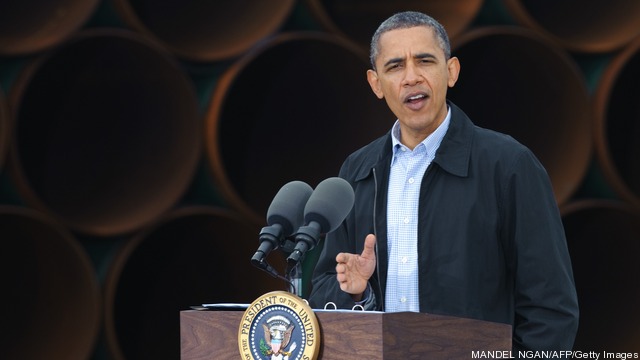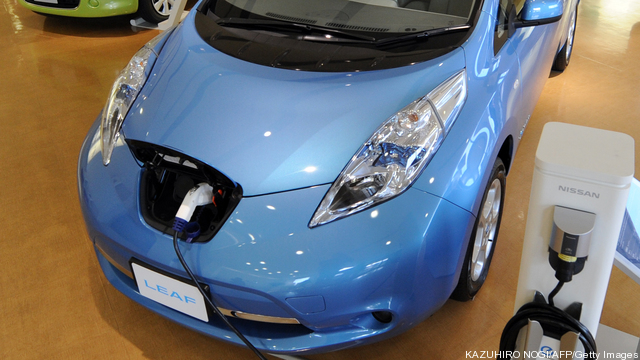The North American gas shale revolution’s medium-term impact on global markets will be realized through exports of the fuel itself, rather than the technology to access it, according to International Energy Agency Executive Director Maria Van Der Hoeven. “The unconventional gas revolution in the US will impact gas markets over the medium term more by… Keep reading →
Canada
Sign up and get Breaking Energy news in your inbox.
We will never sell or share your information without your consent. See our privacy policy.Rural landowners and a First Nation are up in arms of the appointment of Gerry Protti, former Encana executive and founding member of Canadian oil and gas lobbying group CAPP, to the office of Alberta Energy Regulator. The regulator also has environmental responsibilities. [Calgary Herald] British Columbia Premier Christy Clark is pushing to finalize a… Keep reading →
Energy News Roundup: EV Charging Stations Take Over, Total CEO May Face Trial, South Africa Beats US on Solar Financing
By Conway IrwinElectric car manufacturer Tesla has announced plans to dramatically expand its electric vehicle charging network – the company claims that within six months, it will connect most major metropolitan areas in the US and southern Canada. [Forbes] In somewhat related but perhaps slightly less dramatic news, the US Navy has unveiled its first solar-powered EV… Keep reading →
Stephen Harper on Keystone XL: Would You Rather Get Your Oil from Canada or Venezuela?
By Jared AndersonCanadian Prime Minister Stephen Harper spoke bluntly about the rationale for approving the Keystone XL pipeline during a visit to the Council on Foreign Relations in New York yesterday. Canadian energy exports are critically important to the country’s economy, which has suffered in recent years from a lack of market access for its crude oil.… Keep reading →

The controversial Keystone XL Pipeline was very much on the agenda at today’s FT Global Investment Series: Focus on Canada event held in New York City, with government officials and business leaders using strong language to underline the importance of US – Canadian trade relations with regard to the pipeline.
“For the record, I would note that is no small irritant to some in Canada that our American friends focus on the current and future emissions from the oil sands while, here in the United States, a far greater environmental impact is caused by hundreds of coal-fired plants that remain in operation,” said Jim Prentice, Senior Executive Vice President and Vice Chairman at CIBC. Keep reading →

Canada’s oil sands have been all over the news in the context of the Keystone XL pipeline project that would ship upgraded crude oil and diluted bitumen from Northern Alberta to the US Gulf Coast refining center.
Breaking Energy toured the region and visited some oil sands production projects as part of a media tour organized by the Canadian Consulate General in NY and the Government of Alberta last November. If Keystone XL has become a big deal in the US, the push and pull between environmental consequences and economic benefits at the heart of oil sands development is probably an even bigger deal across the northern border. Keep reading →

The Keystone oil pipeline may have won approval from Nebraska’s governor Tuesday, but the final decision rests with President Obama.
And after the heavy emphasis on climate change in his inaugural speech Monday, analysts say Obama is likely to feel even more pressure to reject the pipeline. Keep reading →

Oil sands producers found themselves in the midst of a fresh attack from the environmental community when a new study released Monday identified levels of oil sands-related contamination that appear to have intensified since the beginning of commercial development to present day. Core samples extracted from 6 regional lakes showed the presence of polycyclic aromatic hydrocarbons up to 50 miles north of Fort McMurray, Alberta – the hub of oil sands mining activity.
“Our research tells a consistent story of increased contaminants and ecological change that has occurred in the region since industrial development of bitumen resources began,” Joshua Kurek, a postdoctoral fellow at Queen’s University, Department of Biology is quoted as saying on the university’s website. Keep reading →

The iconic image associated with Canada’s oil sands development is that of a huge open pit mine, gargantuan dump trucks and enormous tailings ponds, but this production method is being outmoded as producers move to develop deeper bitumen deposits. Although it relies on a relatively young technology, in situ oil sands development is the wave of the future in Northern Alberta’s oil patch.
Commercial oil sands mining operations date back to the 1960’s and the technology that undergirds the process continues to evolve. Notably, some of the most interesting new technology is invisible, as companies are using horizontal drilling technology to recover oil from deposits located greater than 200 feet below ground. These deeper deposits account for 80 percent of total proven oil sands reserves and are expected to account for 80 percent of total oil sands production over the medium term, from about 50 percent mining and 50 percent in situ today. Keep reading →
Encana and Ferus LNG enter into joint venture to build liquefied natural gas fuel plant in Western Canada http://ow.ly/gd4cg
By Peter GardettEncana and Ferus LNG enter into joint venture to build liquefied natural gas fuel plant in Western Canada http://ow.ly/gd4cg encanacorp




